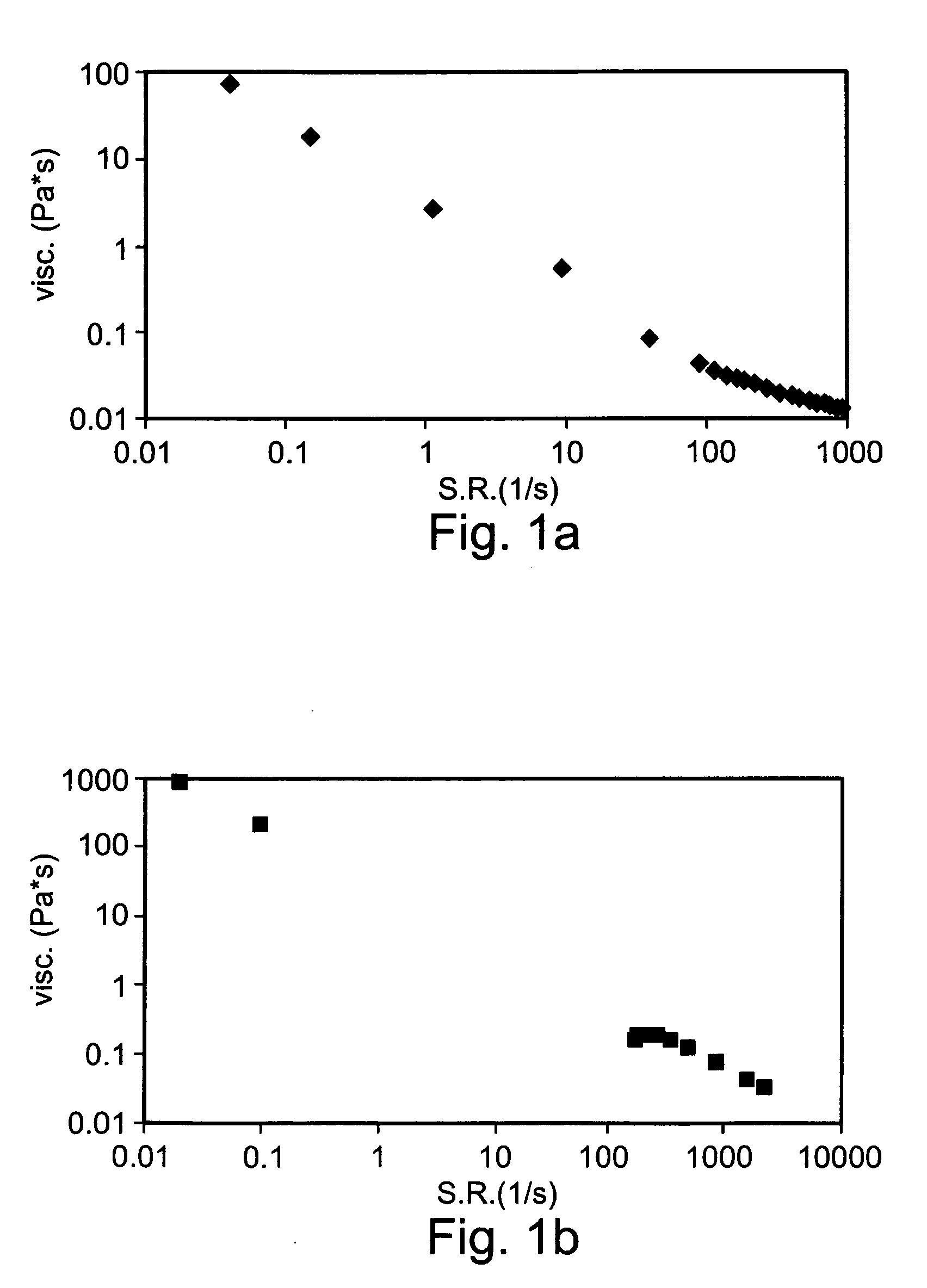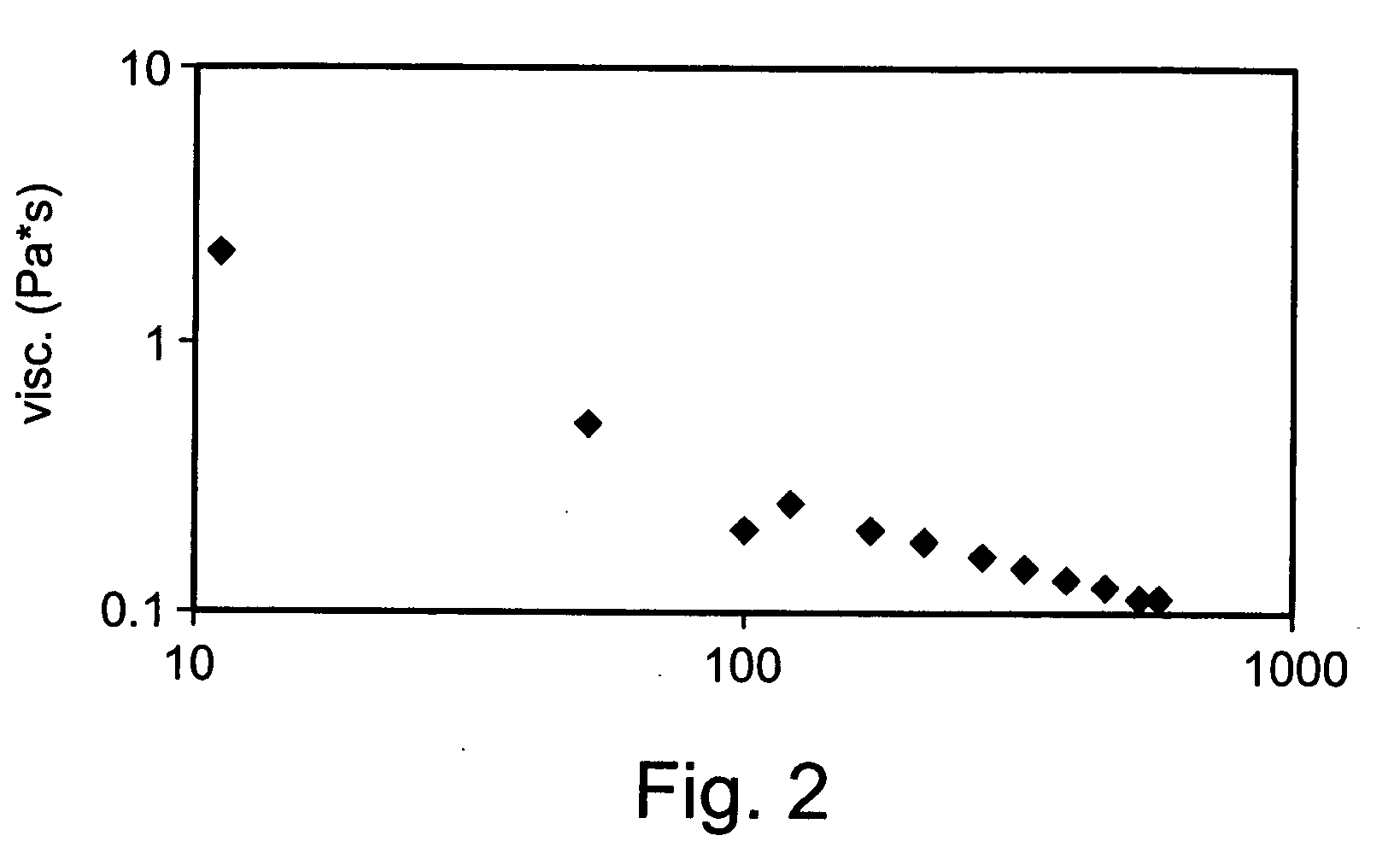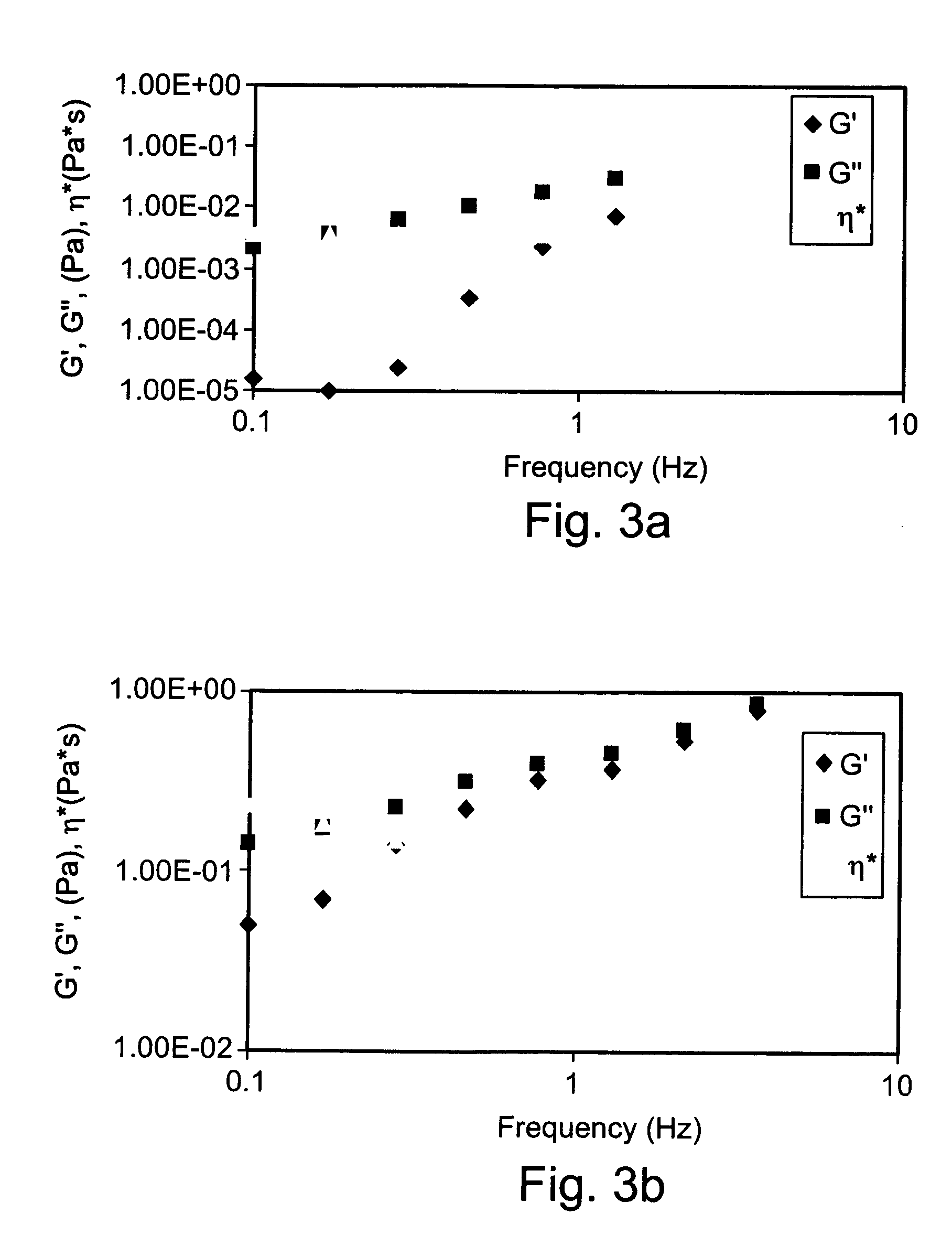Injectable cross-linked polymeric preparations and uses thereof
a cross-linked polymer and injection technology, applied in the field of cross-linked polymer preparations, can solve the problems of limited clinical use of such cell seeded 3-d biomaterial scaffolds, early ventricular rupture or aneurysm formation, etc., and achieve the effect of substantial therapeutic benefits for damaged body tissue, safe and effective treatmen
- Summary
- Abstract
- Description
- Claims
- Application Information
AI Technical Summary
Benefits of technology
Problems solved by technology
Method used
Image
Examples
example 1
Preparation and Rheological Evaluation of Cross-Linked Alginate Solutions
[0223] Materials and Methods:
[0224] Preparation of Sodium Alginate and Calcium Gluconate Mixtures
[0225] Sodium alginate samples (Mw ranging from about 15 to 160 kDa; G / M ratio 2.1) were purchased from FMC Biopolymers, Drammen, Norway. Sodium alginate samples were dissolved in double distilled water (DDW) to a final concentration of 2% (w / v) then mixed with 2% (w / v) calcium gluconate solution (D-gluconic acid, hemi-calcium salt, Sigma). The mixtures were homogenized using Heidolph DIAX 900 homogenizer equipped with 10 G head, operating at 26,000 rpm for about 2 minutes. Following homogenization, the preparations were refrigerated at about 4-8° C. until use.
[0226] Alginate Molecular Weight Determination
[0227] Sodium alginate samples were separated on a chromatographic system comprising a Waters 606 pump followed by two PSS Suprema gel permeation columns connected in a series. Column dimensions were 300×8 mm2...
example 2
Injection of Cross-Linked Alginate Solution into a Rat Infarcted Myocardium
[0240] Materials and Methods:
[0241] Aqueous Cross-Linked Alginate Solution
[0242] The solution was made of 1% w / v sodium alginate (Avg. Mw=30 kDa; G / M ratio 2.1) and 0.3% w / v calcium gluconate, as described in Example 1 hereinabove.
[0243] Animal care
[0244] The study was performed in accordance with the guidelines of The Animal Care and Use Committee of Ben-Gurion University and Sheba Medical Center, Tel-Aviv University, which conforms to the policies of the American Heart Association and the “Guide for the Care and Use of Laboratory Animals” (Department of Health and Human Services, NIH Publication No. 85-23).
[0245] Induction of Myocardial Infarction
[0246] Male Sprague-Dawley rats (about 250 g) were anesthetized with a combination of 40 mg / kg ketamine and 10 mg / kg xylazine, intubated and mechanically ventilated. The rat chest was opened by left thoracotomy, the pericardium was removed and the proximal l...
example 3
Injection of Cross-Linked Alginate Solution into a Pig Infarcted Myocardium
[0265] Materials and Methods:
[0266] Aqueous Cross-Linked Alginate Solution
[0267] The solution was made of 1% w / v sodium alginate (Avg. Mw=30 kDa; G / M ratio 2.1) and 0.3% w / v calcium gluconate, as described in Example 1 hereinabove.
[0268] Animal Care
[0269] The study was performed in accordance with the guidelines of The Animal Care and Use Committee of Ben-Gurion University and Sheba Medical Center, Tel-Aviv University, which conforms to the policies of the American Heart Association and the “Guide for the Care and Use of Laboratory Animals” (Department of Health and Human Services, NIH Publication No. 85-23).
[0270] Induction of Myocardial Infarct (MI)
[0271] Myocardial infarct was induced according to Yau et al. (Ann Thorac Surg 75:169-176, 2003) and Watanabe et al. (Cell Transplant 7:239-246, 1998). Briefly, female Sincklaire (mini) pigs weighing 3040 kg were pre-medicated with ketamine (20 to 30 mg / kg...
PUM
| Property | Measurement | Unit |
|---|---|---|
| temperature | aaaaa | aaaaa |
| oscillatory frequencies | aaaaa | aaaaa |
| oscillatory frequencies | aaaaa | aaaaa |
Abstract
Description
Claims
Application Information
 Login to View More
Login to View More - R&D
- Intellectual Property
- Life Sciences
- Materials
- Tech Scout
- Unparalleled Data Quality
- Higher Quality Content
- 60% Fewer Hallucinations
Browse by: Latest US Patents, China's latest patents, Technical Efficacy Thesaurus, Application Domain, Technology Topic, Popular Technical Reports.
© 2025 PatSnap. All rights reserved.Legal|Privacy policy|Modern Slavery Act Transparency Statement|Sitemap|About US| Contact US: help@patsnap.com



